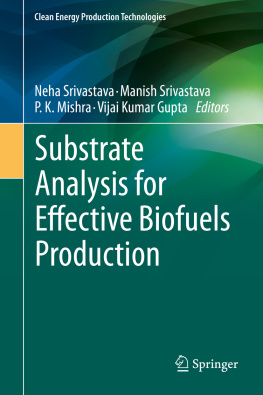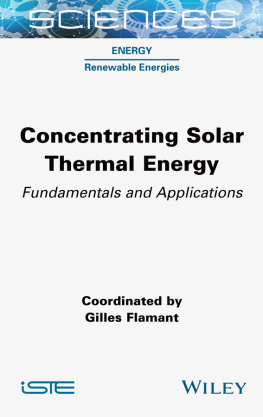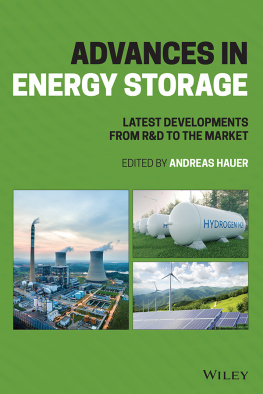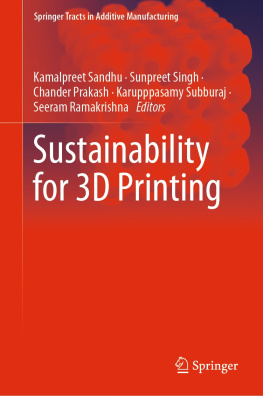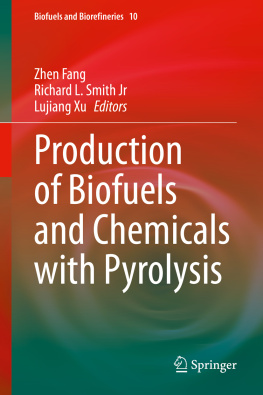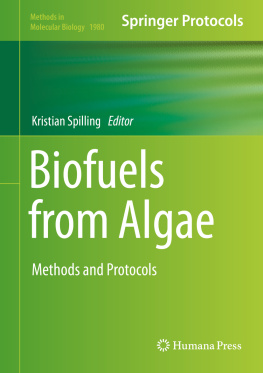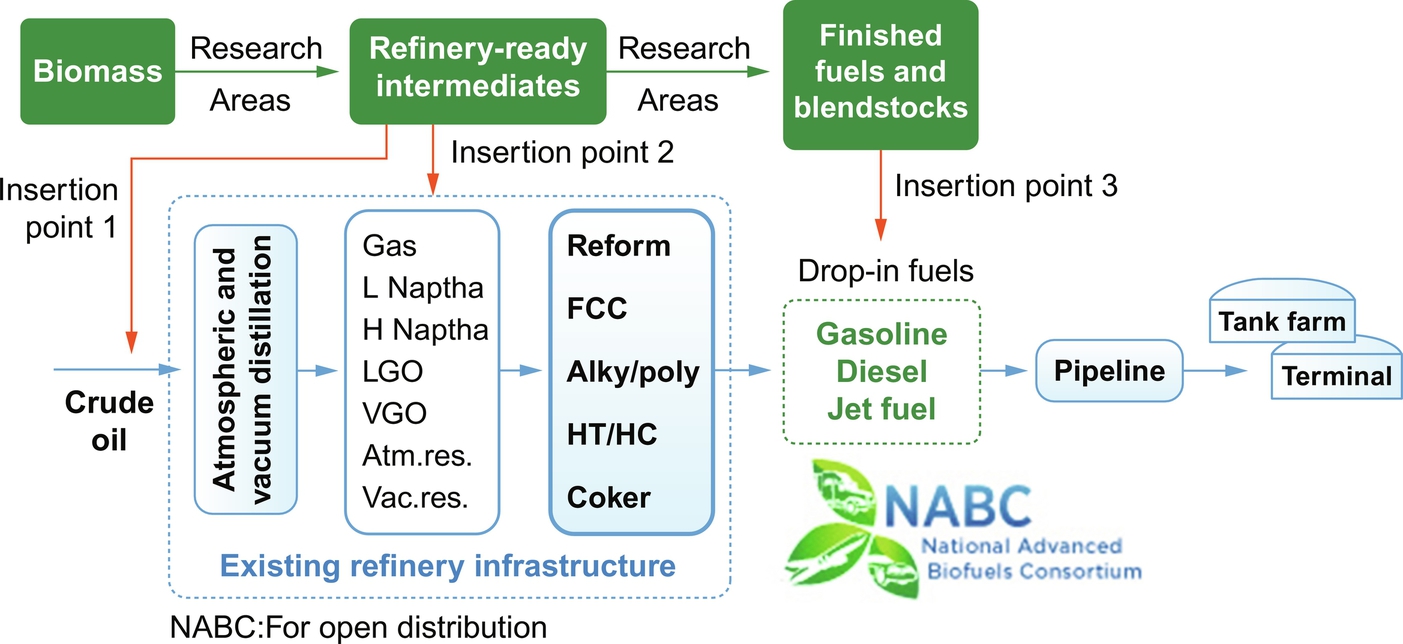Direct Thermochemical Liquefaction for Energy Applications
First Edition
Lasse Rosendahl

Copyright
Woodhead Publishing is an imprint of Elsevier
The Officers Mess Business Centre, Royston Road, Duxford, CB22 4QH, United Kingdom
50 Hampshire Street, 5th Floor, Cambridge, MA 02139, United States
The Boulevard, Langford Lane, Kidlington, OX5 1GB, United Kingdom
Copyright 2018 Elsevier Ltd. All rights reserved.
No part of this publication may be reproduced or transmitted in any form or by any means, electronic or mechanical, including photocopying, recording, or any information storage and retrieval system, without permission in writing from the publisher. Details on how to seek permission, further information about the Publishers permissions policies and our arrangements with organizations such as the Copyright Clearance Center and the Copyright Licensing Agency, can be found at our website: www.elsevier.com/permissions.
This book and the individual contributions contained in it are protected under copyright by the Publisher (other than as may be noted herein).
Notices
Knowledge and best practice in this field are constantly changing. As new research and experience broaden our understanding, changes in research methods, professional practices, or medical treatment may become necessary.
Practitioners and researchers must always rely on their own experience and knowledge in evaluating and using any information, methods, compounds, or experiments described herein. In using such information or methods they should be mindful of their own safety and the safety of others, including parties for whom they have a professional responsibility.
To the fullest extent of the law, neither the Publisher nor the authors, contributors, or editors, assume any liability for any injury and/or damage to persons or property as a matter of products liability, negligence or otherwise, or from any use or operation of any methods, products, instructions, or ideas contained in the material herein.
Library of Congress Cataloging-in-Publication Data
A catalog record for this book is available from the Library of Congress
British Library Cataloguing-in-Publication Data
A catalogue record for this book is available from the British Library
ISBN: 978-0-08-101029-7 (print)
ISBN: 978-0-08-101025-9 (online)
For information on all Woodhead publications visit our website at https://www.elsevier.com/books-and-journals

Publisher: Joe Hayton
Acquisition Editor: Raquel Zanol
Editorial Project Manager: Mariana Kuhl
Production Project Manager: Omer Mukthar
Cover Designer: Victoria Pearson
Typeset by SPi Global, India
List of contributors
H. Bergem SINTEF Materials and Chemistry, Trondheim, Norway
P. Biller Aarhus University, Aarhus, Denmark
D. Castello Aalborg University, Aalborg, Denmark
W.-T. Chen University of Illinois at Urbana-Champaign, Urbana, IL, United States
J.K.R. Guerrero Steeper Energy Canada Ltd, S.W. Calgary, AB, Canada
H.J. Heeres University of Groningen, Groningen, The Netherlands
D. Ho
Western University, London, ON, Canada
Trojan Technologies, London, ON, Canada
S.B. Iversen Steeper Energy ApS, Hrsholm, Denmark
C.U. Jensen Steeper Energy ApS, Hrsholm, Denmark
S. Karatzos Steeper Energy Canada Ltd, S.W. Calgary, AB, Canada
R. Ldeng SINTEF Materials and Chemistry, Trondheim, Norway
L. Nazari Western University, London, ON, Canada
G. Olofsson Steeper Energy ApS, Hrsholm, Denmark
A. Pattiya Mahasarakham University, Kamriang, Maha Sarakham, Thailand
M.B. Ray Western University, London, ON, Canada
L. Rosendahl Aalborg University, Aalborg, Denmark
D. Santoro
Western University, London, ON, Canada
Trojan Technologies, London, ON, Canada
S. Sarathy
Western University, London, ON, Canada
Trojan Technologies, London, ON, Canada
I. Sintamarean Aalborg University, Aalborg, Denmark
S.S. Toor Aalborg University, Aalborg, Denmark
R.H. Venderbosch Biomass Technology Group BV, Enschede, The Netherlands
C. (Charles) Xu Western University, London, ON, Canada
W. Yin University of Groningen, Groningen, The Netherlands
Y. Zhang University of Illinois at Urbana-Champaign, Urbana, IL, United States
Preface
In the quest for sustainable alternatives to fossil hydrocarbon fuels, biomass direct thermochemical liquefaction (DTL) technologies are emerging as promising and viable pathways, potentially capable of producing necessary volumes of relevant fuel types and doing so with both environmental and financial sustainability.
Several recent studies, for example, . ASTM approval for liquefaction pathway fuels is ongoing, with hydrotreated depolymerised cellulosic jet (HDCJ) being certified by UOP and others, and it could be argued that catalytic hydrothermolysis (CH, by ARA, Chevron, and others) is essentially what happens when fatty acids (present in a range of biomass and organic waste streams) are coprocessed in a hydrothermal liquefaction process. All these efforts are crucial in setting up the mechanisms taking these fuels to the market, thus defining business propositions and market opportunities for investors and technology providers.
A number of key features set DTL technologies positively aside from currently available bioderived fuels and other technology pathways under development:
Nonfood/feed input streams : DTL technologies are inherently feedstock flexible and do not rely on isolation of specific macrocomponents (typically carbohydrates or starch) before processing. Rather than being a problem, lignin is a valuable source of desired product compounds. Wet and dry feedstock streams can be efficiently handled by DTL technologies, and input streams can be combined from a variety of sources according to availability, economics, or other considerations. Residual and waste streams from society or from other bioprocessing can be efficiently integrated.
Multiple component product stream : Unlike bioethanol/biomethanol/biobutanol, bio-diesel (FAME/FAEE), sugar-derived jet fuels and Fischer-Tropsch fuels, DTL products are multicomponent, not single-molecule fuels. This enables DTL products to address the entire range of fuels available today, defined by boiling point ranges and hydrocarbon characteristics (i.e. paraffins and aromatics). For jet fuels, currently the most challenging in terms of approval, this means that full replacement is an option, rather than a blend limit less than 50%, which is the case for single-molecule bioderived jetfuels. Furthermore, it provides an extensive source for platform chemicals and high-value carbon-containing products, not just single-platform molecules.
Drop-in-type fuels : DTL-derived fuels are potentially drop-in fuels; in the definition of IEA Task 39, drop-in biofuels are defined as liquid bio-hydrocarbons that are functionally equivalent to petroleum fuels and are fully compatible with existing petroleum infrastructure ).


